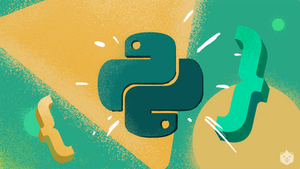Why Learn Java in 2024?
Java continues to stand out as one of the most versatile and powerful programming languages in the world. As we progress through 2024, Java remains a key player in software development, web applications, mobile apps, and enterprise-level solutions. Whether you are just starting your programming journey or looking to solidify your understanding of Java, this guide will take you through the essentials and more.
This comprehensive guide covers everything from the basics of Java to advanced concepts like serialization, multithreading, and exception handling. By the end of this guide, you’ll be equipped with the knowledge and skills to write efficient Java programs and tackle real-world challenges.
Watch our complete and free certified Java course for beginners
Chapter 1: Getting Started with Java
1.1 What is Java?
Java is a high-level, class-based, object-oriented programming language designed to have as few implementation dependencies as possible. It is widely used across various platforms, making it a go-to language for developers worldwide.
Java is known for its "Write Once, Run Anywhere" (WORA) capability, meaning that compiled Java code can run on all platforms that support Java without the need for recompilation. This feature has made Java a popular choice for building cross-platform applications.
1.2 Setting Up Your Java Development Environment
Before diving into Java programming, you need to set up your development environment. This involves installing the Java Development Kit (JDK) and configuring an Integrated Development Environment (IDE), such as Eclipse IDE.
- JDK Installation: The JDK is an essential tool for Java developers. It provides the necessary libraries, compiler, and runtime environment to develop and run Java programs. To install the JDK, visit the official Oracle website and download the latest version compatible with your operating system.
- Eclipse IDE Configuration: Eclipse is a popular IDE that supports Java development. It provides a user-friendly interface and powerful features like code completion, debugging, and project management. After installing Eclipse, configure it by linking it to your JDK installation and setting up your workspace.
Chapter 2: Understanding the Basics of Java
2.1 Java Syntax and Features
Java's syntax is straightforward and easy to understand, making it an ideal language for beginners. Some of the key features of Java include:
- Platform Independence: Java programs can run on any device with a Java Virtual Machine (JVM).
- Object-Oriented Programming (OOP): Java is inherently object-oriented, which means it focuses on creating objects that contain both data and methods.
- Automatic Memory Management: Java has a built-in garbage collector that manages memory automatically.
2.2 Variables, Data Types, and Operators in Java
In Java, variables are used to store data. Each variable has a specific data type that determines the kind of data it can hold. Common data types include:
- int: Used for storing integers.
- char: Used for storing characters.
- String: Used for storing sequences of characters.
Operators are used to perform operations on variables. Java supports various operators, including arithmetic, relational, and logical operators.
- Unary Operators: Unary operators operate on a single operand. Examples include the increment (++) and decrement (--) operators.
Learn more about Variables and Data Types with our free certified Java course for beginners
Chapter 3: Diving into Object-Oriented Programming (OOP)
3.1 What is Object-Oriented Programming?
Object-Oriented Programming (OOP) is a programming paradigm that revolves around the concept of objects. In Java, everything is treated as an object, which can have properties (variables) and behaviors (methods).
OOP concepts include:
- Classes and Objects: A class is a blueprint for creating objects. Objects are instances of classes.
- Inheritance: Allows a new class to inherit properties and methods from an existing class.
- Polymorphism: Allows objects to be treated as instances of their parent class. It supports method overriding and method overloading.
- Encapsulation: Bundles the data (variables) and methods (functions) that operate on the data into a single unit or class.
3.2 Creating Your First Java Class and Object
To better understand OOP, let’s create a simple Java program:
public class HelloWorld {
// Instance variables
private String message;
// Constructor
public HelloWorld(String message) {
this.message = message;
}
// Method to print the message
public void printMessage() {
System.out.println(message);
}
// Main method
public static void main(String[] args) {
// Create an object of the HelloWorld class
HelloWorld hello = new HelloWorld("Hello, World!");
hello.printMessage();
}
}
This program demonstrates the creation of a class (HelloWorld), a constructor, and a method (printMessage). The main method creates an object of the HelloWorld class and calls the printMessage method to display the message.
Chapter 4: Advanced OOP Concepts
4.1 Polymorphism in Java
Polymorphism allows methods to perform different tasks based on the object that calls them. In Java, polymorphism can be implemented through method overloading and method overriding.
- Method Overloading: This occurs when multiple methods in the same class have the same name but different parameters.
public class Calculator {
// Method to add two integers
public int add(int a, int b) {
return a + b;
}
// Method to add three integers
public int add(int a, int b, int c) {
return a + b + c;
}
}
- Method Overriding: This occurs when a subclass provides a specific implementation of a method that is already defined in its superclass.
class Animal {
// Method in the superclass
public void sound() {
System.out.println("Animal makes a sound");
}
}
class Dog extends Animal {
// Overriding the sound method in the subclass
@Override
public void sound() {
System.out.println("Dog barks");
}
}
4.2 Abstract Classes and Interfaces
- Abstract Classes: An abstract class cannot be instantiated. It is used to provide a base class that other classes can extend. Abstract classes can contain abstract methods (without a body) that must be implemented by subclasses.
abstract class Animal {
// Abstract method
public abstract void sound();
// Regular method
public void sleep() {
System.out.println("Animal sleeps");
}
}
class Dog extends Animal {
// Implementing the abstract method
public void sound() {
System.out.println("Dog barks");
}
}
- Interfaces: An interface in Java is a blueprint of a class that contains static constants and abstract methods. It is used to achieve complete abstraction and multiple inheritance.
interface Animal {
void sound(); // abstract method
}
class Dog implements Animal {
// Implementing the interface method
public void sound() {
System.out.println("Dog barks");
}
}
``Learn more about Abstract Classes and Interfaces with our free certified Java course for beginners
Chapter 5: Advanced Java Programming
5.1 Serialization and Deserialization
Serialization in Java is the process of converting an object into a byte stream, which can then be saved to a file or transmitted over a network. Deserialization is the reverse process, where the byte stream is converted back into an object.
import java.io.*;
class Student implements Serializable {
private static final long serialVersionUID = 1L;
private int id;
private String name;
public Student(int id, String name) {
this.id = id;
this.name = name;
}
public String toString() {
return "Student [id=" + id + ", name=" + name + "]";
}
}
public class SerializationDemo {
public static void main(String[] args) {
Student s1 = new Student(101, "John Doe");
// Serialization
try (FileOutputStream fos = new FileOutputStream("student.txt");
ObjectOutputStream oos = new ObjectOutputStream(fos)) {
oos.writeObject(s1);
} catch (IOException e) {
e.printStackTrace();
}
// Deserialization
try (FileInputStream fis = new FileInputStream("student.txt");
ObjectInputStream ois = new ObjectInputStream(fis)) {
Student deserializedStudent = (Student) ois.readObject();
System.out.println("Deserialized Student: " + deserializedStudent);
} catch (IOException | ClassNotFoundException e) {
e.printStackTrace();
}
}
}
This example shows how to serialize a Student object to a file and then deserialize it back into an object.
5.2 Multithreading in Java
Multithreading allows a program to perform multiple tasks simultaneously. In Java, each thread runs independently, and multithreading is achieved through the Thread class or the Runnable interface.
class CountdownTask implements Runnable {
private String threadName;
CountdownTask(String threadName) {
this.threadName = threadName;
}
public void run() {
for (int i = 5; i > 0; i--) {
System.out.println(threadName + ": " + i);
try {
Thread.sleep(1000);
} catch (InterruptedException e) {
System.out.println(threadName + " interrupted.");
}
}
System.out.println(threadName + " finished.");
}
}
public class MultithreadingDemo {
public static void main(String[] args) {
Thread t1 = new Thread(new CountdownTask("Thread 1"));
Thread t2 = new Thread(new CountdownTask("Thread 2"));
t1.start();
t2.start();
}
}
This code demonstrates basic multithreading by creating two threads that countdown from 5.
5.3 Exception Handling in Java
Exception handling in Java ensures that the program can handle runtime errors gracefully. It uses try, catch, and finally blocks to manage exceptions.
public class ExceptionHandlingDemo {
public static void main(String[] args) {
try {
int result = divide(10, 0);
System.out.println("Result: " + result);
} catch (ArithmeticException e) {
System.out.println("Cannot divide by zero.");
} finally {
System.out.println("This will always execute.");
}
}
public static int divide(int a, int b) {
return a / b;
}
}
In this example, attempting to divide by zero triggers an ArithmeticException, which is caught and handled in the catch block.
Chapter 6: Java Best Practices and Project Implementation
6.1 Java Best Practices
To become a proficient Java developer, it’s important to follow best practices:
- Consistent Naming Conventions: Use meaningful names for classes, methods, and variables.
- Code Readability: Write clean, understandable code with proper indentation and comments.
- Exception Handling: Handle exceptions appropriately to avoid program crashes.
- Memory Management: Be aware of Java's garbage collection and manage resources effectively.
6.2 Final Project: Building a Complete Java Application
To apply what you've learned, let's build a simple Tic-Tac-Toe game in Java. This project will demonstrate the use of classes, methods, OOP principles, and basic user interaction.
import java.util.Scanner;
public class TicTacToe {
private static char[][] board = new char[3][3];
private static char currentPlayer = 'X';
public static void main(String[] args) {
initializeBoard();
playGame();
}
private static void initializeBoard() {
for (int i = 0; i < 3; i++) {
for (int j = 0; j < 3; j++) {
board[i][j] = '-';
}
}
}
private static void printBoard() {
System.out.println("Board:");
for (int i = 0; i < 3; i++) {
for (int j = 0; j < 3; j++) {
System.out.print(board[i][j] + " ");
}
System.out.println();
}
}
private static void playGame() {
boolean isGameOngoing = true;
while (isGameOngoing) {
printBoard();
playerMove();
isGameOngoing = checkGameStatus();
switchPlayer();
}
}
private static void playerMove() {
Scanner scanner = new Scanner(System.in);
int row, column;
while (true) {
System.out.println("Player " + currentPlayer + ", enter your move (row and column): ");
row = scanner.nextInt() - 1;
column = scanner.nextInt() - 1;
if (row >= 0 && row < 3 && column >= 0 && column < 3 && board[row][column] == '-') {
board[row][column] = currentPlayer;
break;
} else {
System.out.println("This move is not valid.");
}
}
}
private static boolean checkGameStatus() {
if (checkWinner()) {
printBoard();
System.out.println("Player " + currentPlayer + " wins!");
return false;
}
if (isBoardFull()) {
printBoard();
System.out.println("The game is a tie!");
return false;
}
return true;
}
private static boolean checkWinner() {
// Check rows
for (int i = 0; i < 3; i++) {
if (board[i][0] == currentPlayer && board[i][1] == currentPlayer && board[i][2] == currentPlayer) {
return true;
}
}
// Check columns
for (int i = 0; i < 3; i++) {
if (board[0][i] == currentPlayer && board[1][i] == currentPlayer && board[2][i] == currentPlayer) {
return true;
}
}
// Check diagonals
if (board[0][0] == currentPlayer && board[1][1] == currentPlayer && board[2][2] == currentPlayer) {
return true;
}
if (board[0][2] == currentPlayer && board[1][1] == currentPlayer && board[2][0] == currentPlayer) {
return true;
}
return false;
}
private static boolean isBoardFull() {
for (int i = 0; i < 3; i++) {
for (int j = 0; j < 3; j++) {
if (board[i][j] == '-') {
return false;
}
}
}
return true;
}
private static void switchPlayer() {
currentPlayer = (currentPlayer == 'X') ? 'O' : 'X';
}
}
This simple Tic-Tac-Toe game demonstrates various Java programming concepts such as control structures, methods, arrays, and user input handling.
Conclusion: The Path Forward
Congratulations! You've completed this comprehensive guide to Java programming for beginners. You’ve learned the essentials of Java, from setting up your environment and writing your first program to understanding advanced topics like OOP, serialization, and multithreading. The final project has given you hands-on experience in building a Java application.
As you continue your journey, remember to keep practicing, explore new concepts, and stay updated with the latest trends in Java development. The world of Java programming is vast and full of opportunities. Happy coding!








